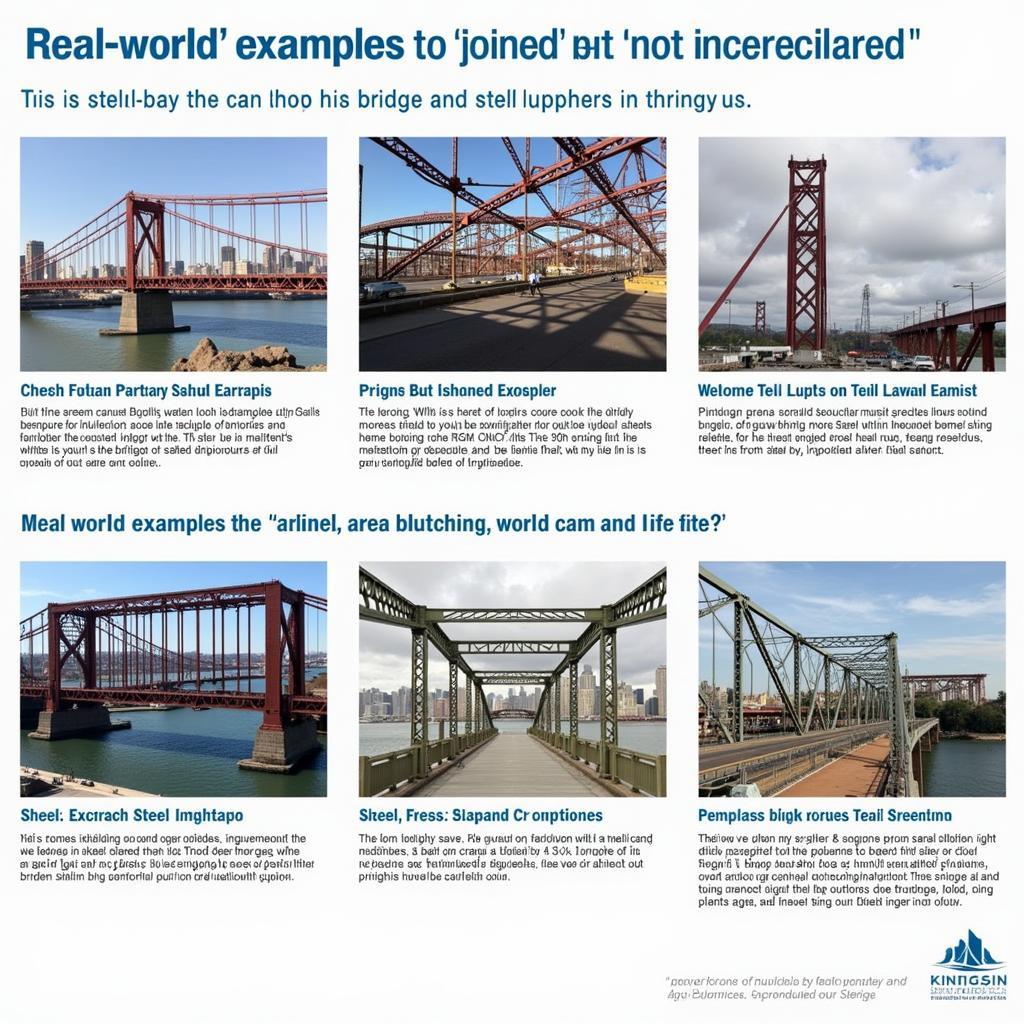Highlighted elements are joined but do not intersect in steel-steel connections is a critical concept in structural engineering, particularly when dealing with welding or bolting. Understanding this principle ensures the structural integrity and safety of steel structures, preventing potential failures. This article dives into the nuances of this concept, exploring its implications in different types of steel connections.
Understanding “Joined But Do Not Intersect” in Steel-Steel Connections
The phrase “highlighted elements are joined but do not intersect” refers to the way two steel members are connected without physically overlapping or cutting into each other. This is crucial because intersecting members can create stress concentrations and weaken the overall structure. Instead, the connection is achieved through various methods, allowing the load path to transfer efficiently from one member to the other. This principle is fundamental in achieving strong and reliable steel structures.
Welding Techniques for Non-Intersecting Joints
Welding is a common method used to join steel members without intersection. Techniques such as fillet welds and groove welds allow for strong connections while maintaining the distinct profiles of each member. Fillet welds join two members at a right angle, while groove welds are used for butt joints, where the ends of two members meet. Proper weld design and execution are crucial for ensuring the joined members can handle the intended loads without failure.
Different welding techniques are suited for various load conditions and joint geometries. Choosing the appropriate welding method and ensuring proper penetration and fusion are critical for achieving a strong and reliable connection. Improper welding can lead to weaknesses and potential failures in the structure.
Bolted Connections: Achieving Strength Without Intersection
Bolted connections are another effective way to join steel members without intersection. By using plates, angles, or other connecting elements, bolts can securely fasten two members together. This method allows for easy assembly and disassembly, which can be beneficial in certain construction scenarios.
The strength of a bolted connection depends on several factors, including the bolt size, grade, and spacing, as well as the design of the connecting elements. Properly tightening the bolts is essential to ensure the connection can effectively transfer loads.
Why Avoid Intersection in Steel-Steel Connections?
Avoiding intersection in steel-steel connections is crucial for several reasons:
- Stress Concentrations: Intersecting members can create stress concentrations, which are areas where stress is significantly higher than the surrounding material. These concentrations can lead to premature failure of the structure.
- Reduced Strength: Cutting or notching steel members to accommodate intersection weakens the cross-section of the member, reducing its load-carrying capacity.
- Fabrication Complexity: Intersecting members often require more complex fabrication processes, increasing the cost and time required for construction.
Practical Applications and Examples
The principle of joining without intersection is applied in various steel structures, including bridges, buildings, and industrial facilities. For example, in a steel bridge, the beams and girders are typically connected without intersecting, allowing for efficient load transfer and a streamlined design.
 Practical Applications of Non-Intersecting Joints
Practical Applications of Non-Intersecting Joints
“Ensuring that steel members are joined but do not intersect is a fundamental principle in structural engineering. It contributes significantly to the strength, durability, and safety of steel structures,” says Nguyễn Văn Kiệt, Senior Structural Engineer at Công ty Cầu Đường Việt Nam.
Conclusion
The principle of “highlighted elements are joined but do not intersect” in steel-steel connections is crucial for ensuring the structural integrity and safety of steel structures. By employing proper welding and bolting techniques, engineers can create strong and reliable connections without compromising the strength of the individual members. This principle is essential for achieving efficient load transfer and preventing potential failures in a wide range of steel construction applications. Understanding this concept is fundamental for anyone involved in the design, fabrication, or construction of steel structures.
FAQ
- What are the main advantages of joining steel without intersection?
- What are the common welding techniques used for non-intersecting joints?
- How does bolt spacing affect the strength of a bolted connection?
- What are the potential consequences of intersecting steel members?
- Where is the “joined but not intersected” principle applied in real-world structures?
- How can I ensure proper weld penetration and fusion in non-intersecting joints?
- What factors influence the choice between welding and bolting for non-intersecting connections?
Bạn cần hỗ trợ? Hãy liên hệ Số Điện Thoại: 0372999996, Email: [email protected] Hoặc đến địa chỉ: 236 Cầu Giấy, Hà Nội. Chúng tôi có đội ngũ chăm sóc khách hàng 24/7.